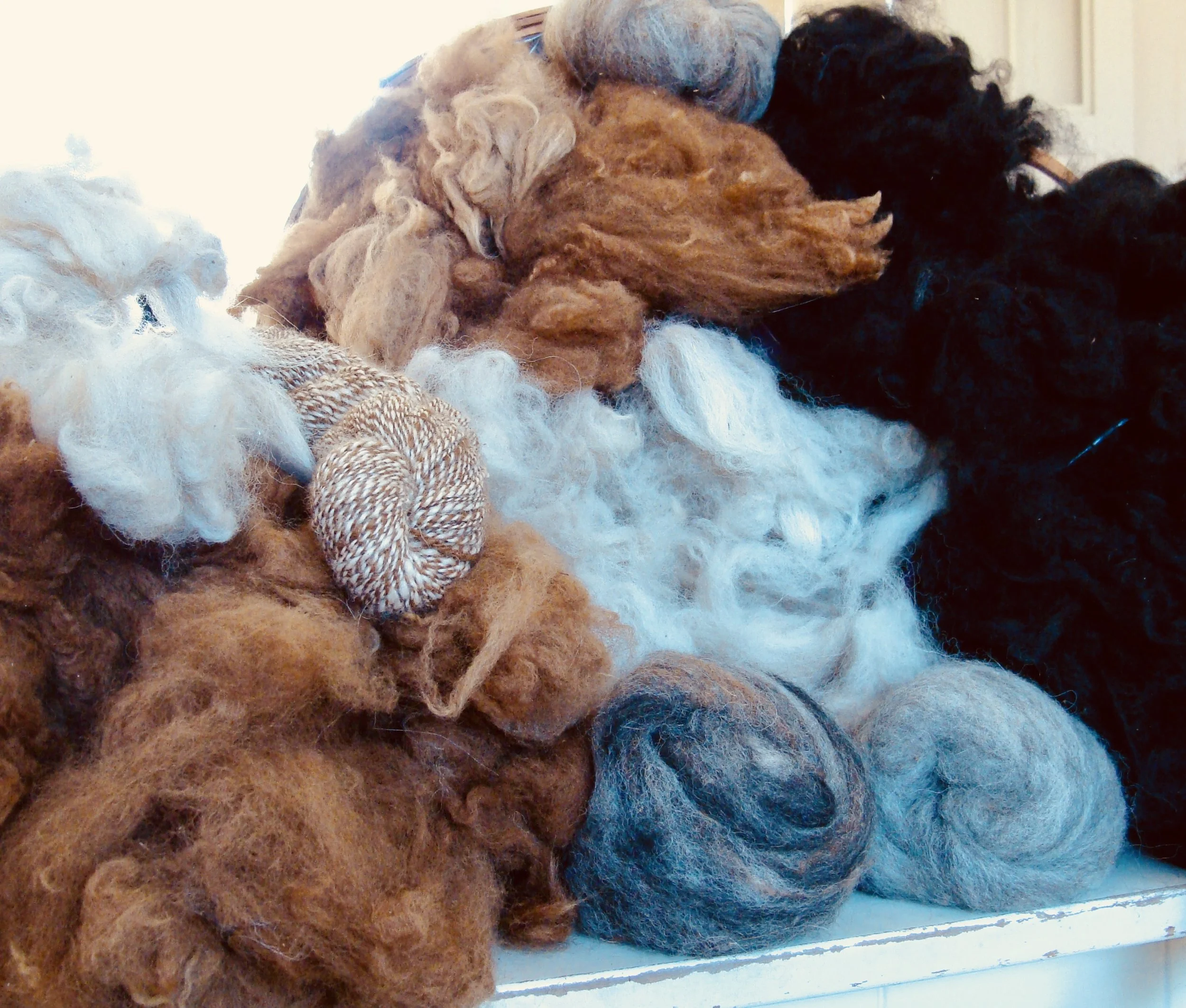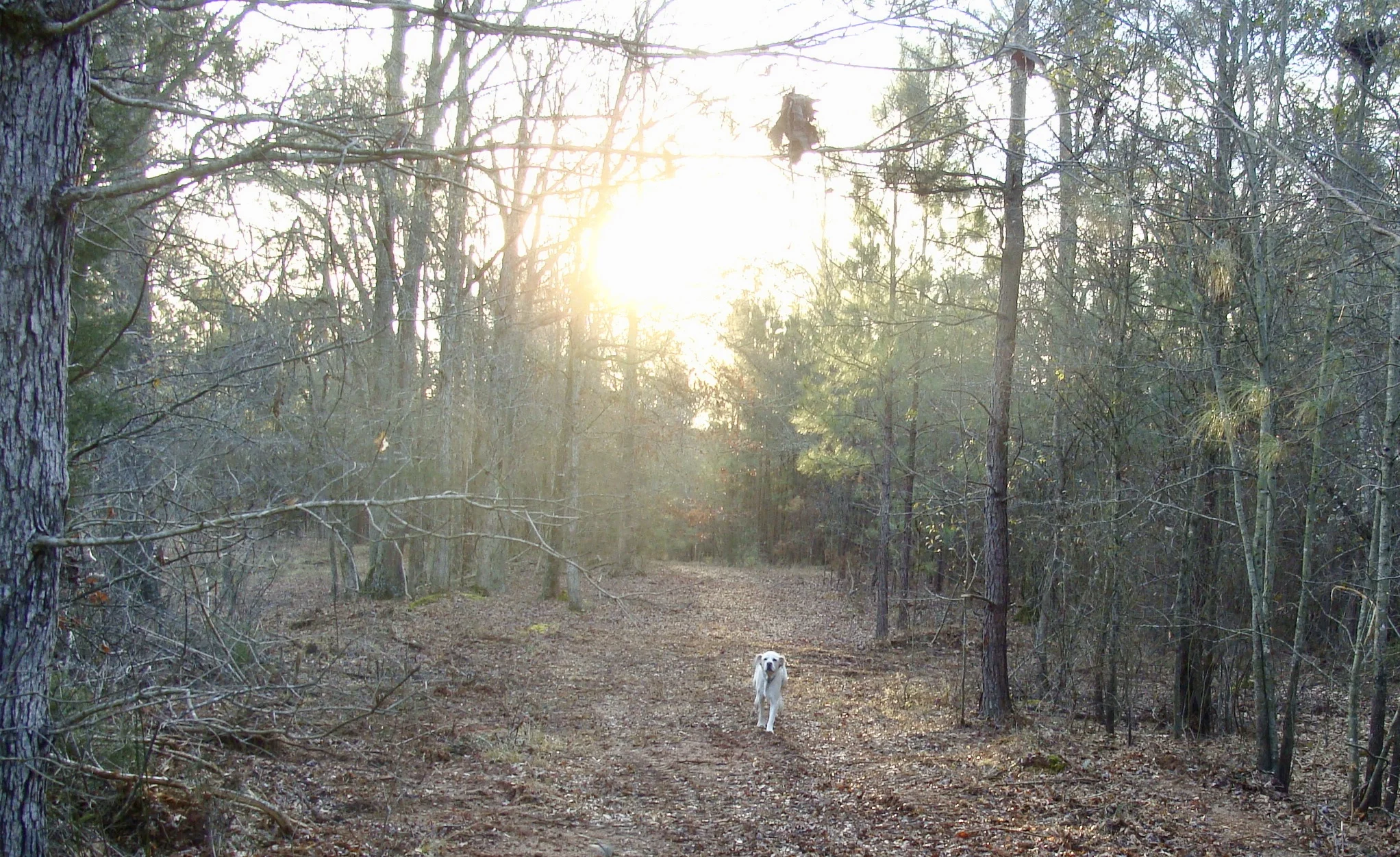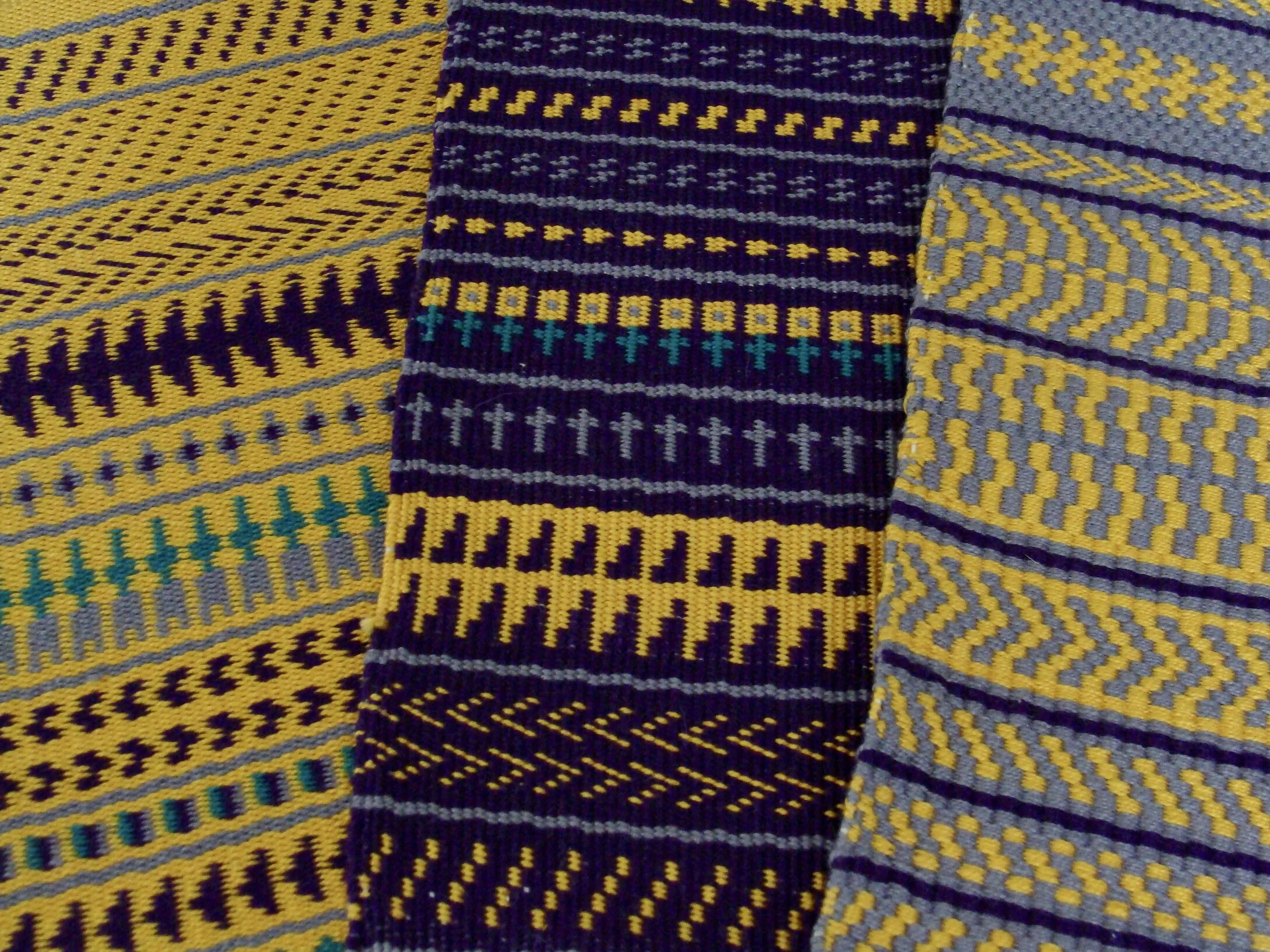Twill "Flowers"
While searching older Handwoven magazines for a project that would "stretch" my weaving skills, I came across a Beyond the Basics column in the March/April 2001 issue. Kim Marie Bunke designed and wove a beautiful 'Advancing Twill Flowers' scarf. In her words:
"The inspiration for this scarf is a perennial border along the side of my house. Physotegia, or "obedient plant" - a light red-velvet bloom with warm green leaves - and purple aster with its cool green leaves are edged with silvery artemisia. I enjoy symmetry and formality in gardens, so the plants are arranged in rows, translated into warp color stripes in my scarf."
This draft seemed like the perfect challenge, combining weaving with my love of flowers.
For the warp I used 50/3 cotton sewing thread in 5 colors - Autumn Green and Holly Green for 'leaves', Lavender and Purple for 'flowers', and Grey for my 'silvery artemisia'. Although a slightly different color palette from the article, I was comfortable knowing that since Ms. Bunke gardens in Wisconsin (Zone 5a) and I in South Carolina (Zone 8a), surely our perennial flower choices would be different!
Note, I did say the warp is sewing thread; that's what makes this a more challenging weave. There are 473 threads (ends) across the 7 7/8 inch warp . . . that's an epi (ends per inch) of 60! As you can imagine, fine threads can easily knot. Fortunately, I didn't have trouble with tangling. The key is maintaining good tension both during the winding of the warp, as well as while beaming the loom. The author recommended using a sectional beam with a tension box. I don't have one, but my good ole warping board worked just dandy. I did heed her advice to wind small bouts of only 2 inches in width.
The complexity of this project really is the preparation of the warp and threading of the heddles. Once completed, the actual weaving is fairly straightforward.
The designer started with a "snowflake twill" originally from Scandinavia that had been published by Mary Atwater in an early Shuttle Craft Bulletin (whew . . . did you follow that?). As I said, this is not my original design. The weave structure is a combination of straight, point, and advancing twill on 8 shafts.
For the weft, I used the same 50/3 cotton thread in black. At 60 picks per inch (ppi), you can imagine there were a lot of shuttle passes thrown to weave a length of 65 inches!
I learned a new finishing technique, hand-beaded fringe. First, I stitched the hem on each end of the scarf. Then to make the beaded fringe, I used a beading needle threaded with the same black thread I used for the weft. I threaded 11/0 Toho black seed beads and added faceted black beads at the end as little "dangles".
It definitely has been scarf weather here. Yesterday morning it was 13 degrees at Green Pastures Farm! For some of you, that may be downright balmy, but it was just a tad too chilly for little Foxy. We had to put a wool vest on our shivering little girl! My son Matthew asked, "so, is that a goat in sheep's clothing?".
Stay Warm!
Debby













